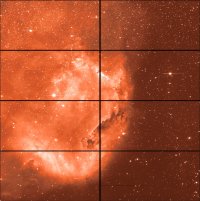The Galactic Bulge Survey
The Galactic Bulge Survey is a multiwavelength survey of 12 square
degrees of the Galactic bulge in the vicinity of the Galactic center. It employs X-ray
observations with the ACIS-I instrument of the Chandra X-ray Observatory and optical observations with
the Mosaic II and DECam cameras of the
Blanco Telescope, tailored to
detect the optical counterparts to the X-ray sources and their variability. Furthermore, the
GBS area is observed at near-infrared wavelengths with ESOs VISTA telescope as part of the VVV survey. We have discovered 1640 X-ray sources. Currently, we are busy classifying these
sources spectroscopically and through their optical and near-infrared variability properties.
The end goals of the survey include: i) Determining the number ratio of X-ray binaries and
cataclysmic variables and through that provide constraints on the common envelope phase that
has been crucial for the formation of these systems but which is poorly understood. ii)
Determine the mass of the black holes and neutron stars in the quiescent X-ray binaries that
we find. These observations will allow us to compare the black hole mass distribution with
that predicted from core-collapse supernova modelling. For the neutron stars, finding massive
neutron stars will allow us to constrain the equation of state of the ultra-dense matter
residing in their cores. iii) From the mass distribution of an X-ray selected sample of
cataclysmic variables we can determine if these systems are viable progenitors of type Ia
supernovae.
|

